For the spherical interface shown in the figure, the two different media with refractive indices n1=1.4 and n2=1.25 are present as shown. The image will be formed at
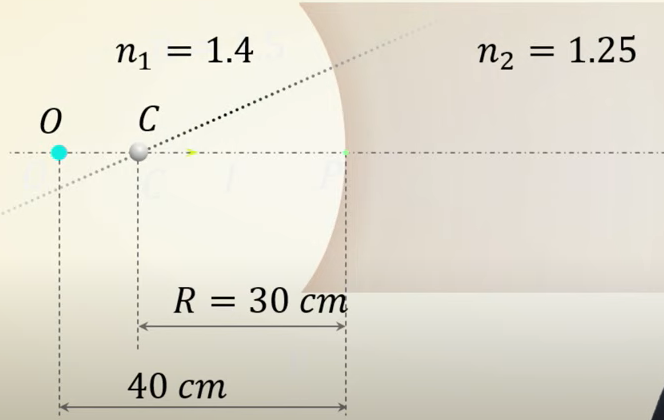
−1253cm
−506cm
−252cm
−20cm
Step by step video & image solution for For the spherical interface shown in the figure, the two different media with refractive indices n_1 = 1.4 and n_2 =1.25 are present as shown. The image will be formed at by Physics experts to help you in doubts & scoring excellent marks in Class 12 exams.
Topper's Solved these Questions
- BOOK - JEE MAINS PREVIOUS YEARCHAPTER - JEE MAIN 2021EXERCISE - SECTION-A80videos
JEE MAIN 2021
- BOOK - JEE MAINS PREVIOUS YEARCHAPTER - JEE MAIN 2021EXERCISE - SECTION-B40videos
JEE MAIN 2021
- BOOK - JEE MAINS PREVIOUS YEARCHAPTER - JEE MAINEXERCISE - All Questions473videos
JEE MAIN
- BOOK - JEE MAINS PREVIOUS YEARCHAPTER - JEE MAIN 2022EXERCISE - Question492videos
JEE MAIN 2022
Similar Questions
A point object 'O' on the principal axis of a spherical surface of radius of curvature 'R' separating two media of refractive indices n1andn2 forms an image 'I' as shown in the figure below. Prove that n2v−n1v=n2−n1R
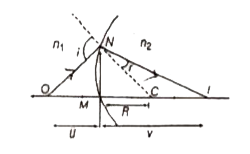 View Solution
View SolutionA thin glass lens of refractive index μ2=1.5 behaves as an interface between two media of refractive indices μ1=1.4andμ3=1.6 respectively. Determine the focal length of the lens for the shown arrangement of radius of curvature of both surfaces 20cm.
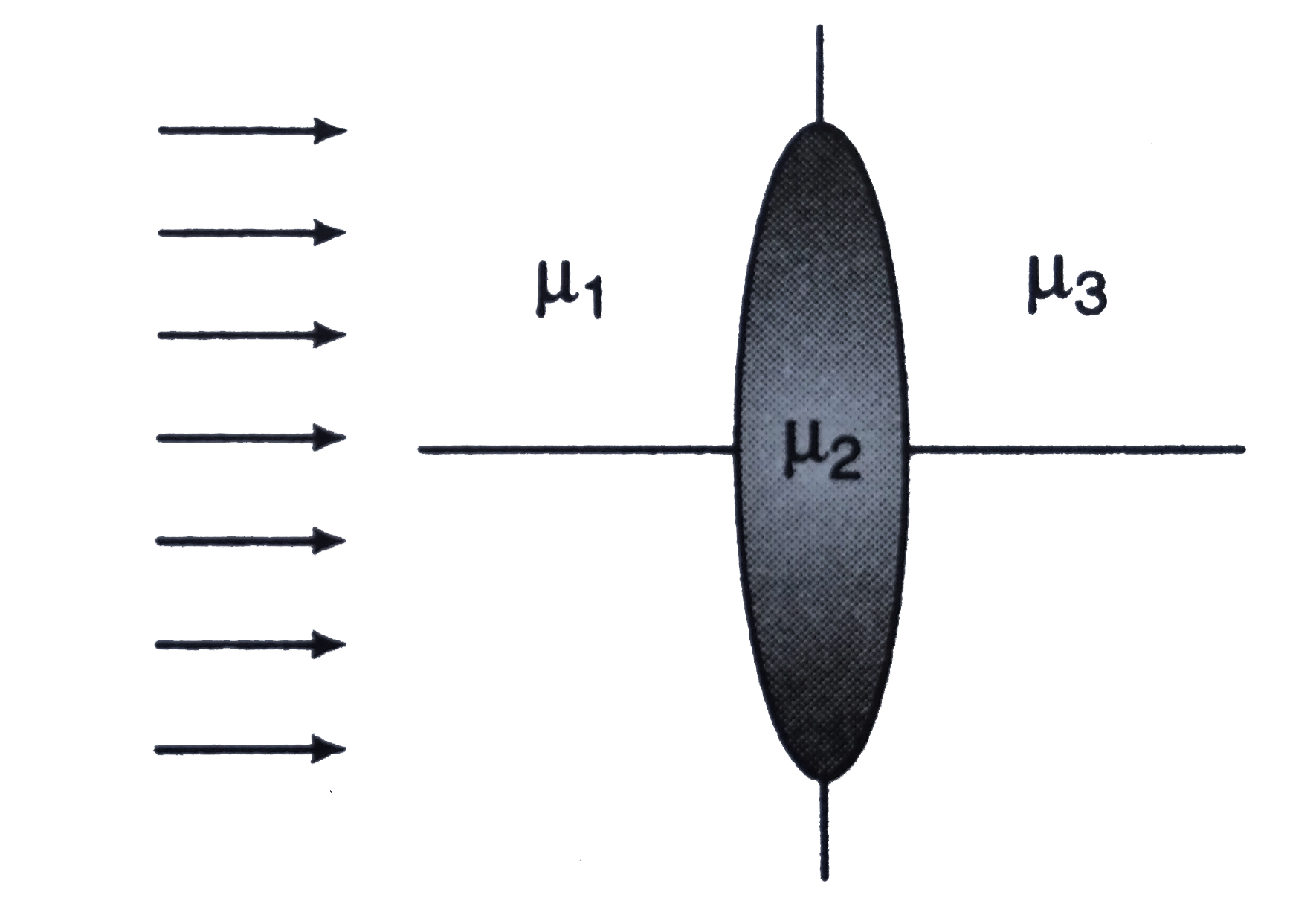 View Solution
View Solution
Knowledge Check
- Question 1 - Select One
If the behaviour of light rays is as shown in the figure. The relation between refractive indices μ,μ1 "and" μ2 is
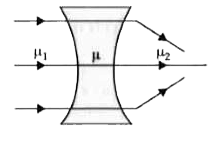 Aμ>μ2>μ1Bμ<μ2<μ1Cμ<μ2,μ=μ1Dμ2<μ1,μ=μ2
Aμ>μ2>μ1Bμ<μ2<μ1Cμ<μ2,μ=μ1Dμ2<μ1,μ=μ2 - Question 2 - Select One or More
A transparent slab of thickness d has a refractive index n(z) that increases with z. Here z is the vertical distance inside the slab, measured from the top. The slab is placed between two media with uniform refractive indices n1andn2(>n1), as shown in the figure. A ray of light is incident with angle θi, from medium 1 and emerges in medium 2 with refraction and θf, with a lateral displacement l.
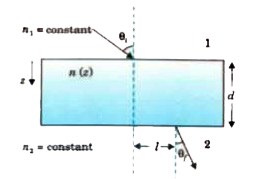
Which of the following statement(s) is (are) true ?Al is independent of n2Bn1sinθ1=n2sinθfCl is independent of n(z)Dn1sinθ1=(n2−n1)sinθf - Question 3 - Select One
Two refracting media are separated by a spherical interfaces as shown in the figure. AB is the principal axis, μ1andμ2 are the refractive indices of medium of incidence and medium of refraction respectively. Then,
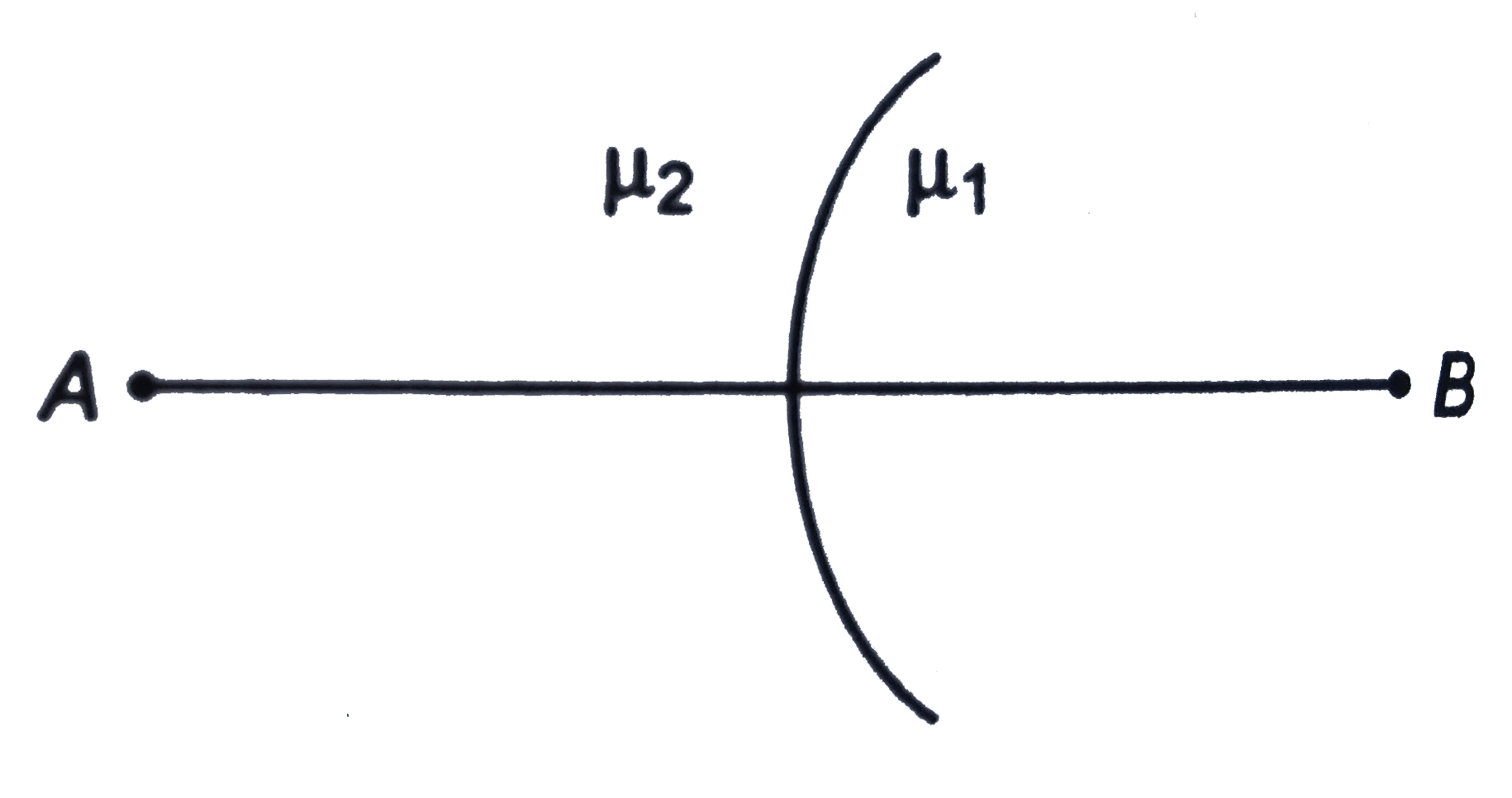 AIf μ2>μ1, then there cannot be a real image of real objectBIf μ2>μ1, then there cannot be a real image of virtual objectCIf μ1>μ2, then there cannot be a real image of virtual objectDIf μ1>μ2, then there cannot be a virtual image of virtual object
AIf μ2>μ1, then there cannot be a real image of real objectBIf μ2>μ1, then there cannot be a real image of virtual objectCIf μ1>μ2, then there cannot be a real image of virtual objectDIf μ1>μ2, then there cannot be a virtual image of virtual object
A rays of light travel frons A to B , where the geometrical distance AB=8cm in air.
It passes through two transparent media havin n1=1.5andn2=1.75 as shown in the figure .
What is the optical path between A and B ?
 View Solution
View SolutionWhat is the relation between the refractive indicesμ,μ1 and μ2 if the behaviour of light rays is shown in Figure.
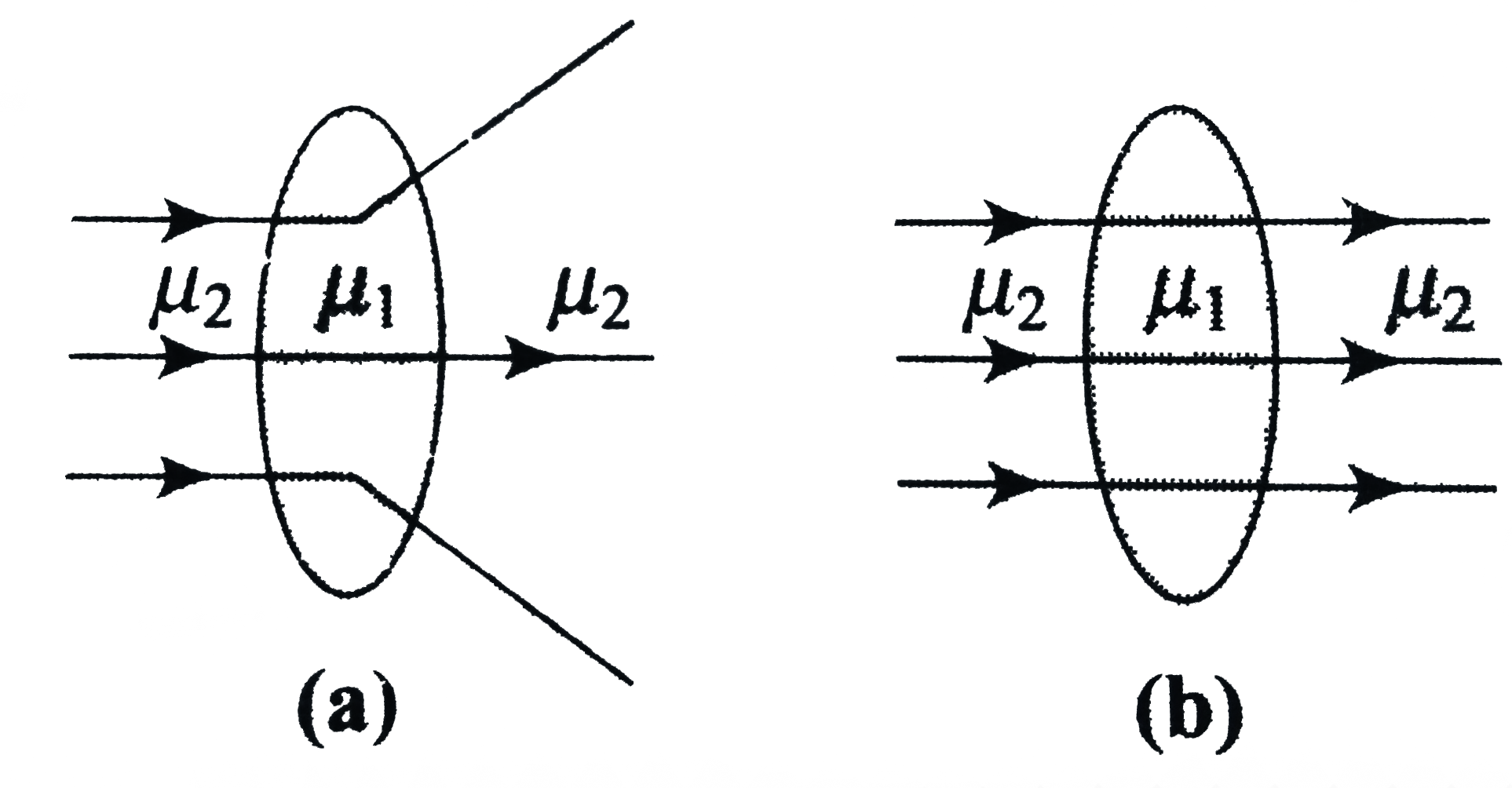 View Solution
View SolutionA monochromatic light is incident on the plane interface AB between two media of refractive indices μ1 and (μ2>μ1) at an angle of incidence θ as shown in Fig.
The angle θ is infinitesimally greater than the critical angle for the two media so that total internal reflection takes place. Now, if a transparent slab DEFG of uniform thickness and of refractive index μ3 is introduced on the interface (as shown in the figure), show that for any value of μ3 all light will ultimately be reflected back into medium II.
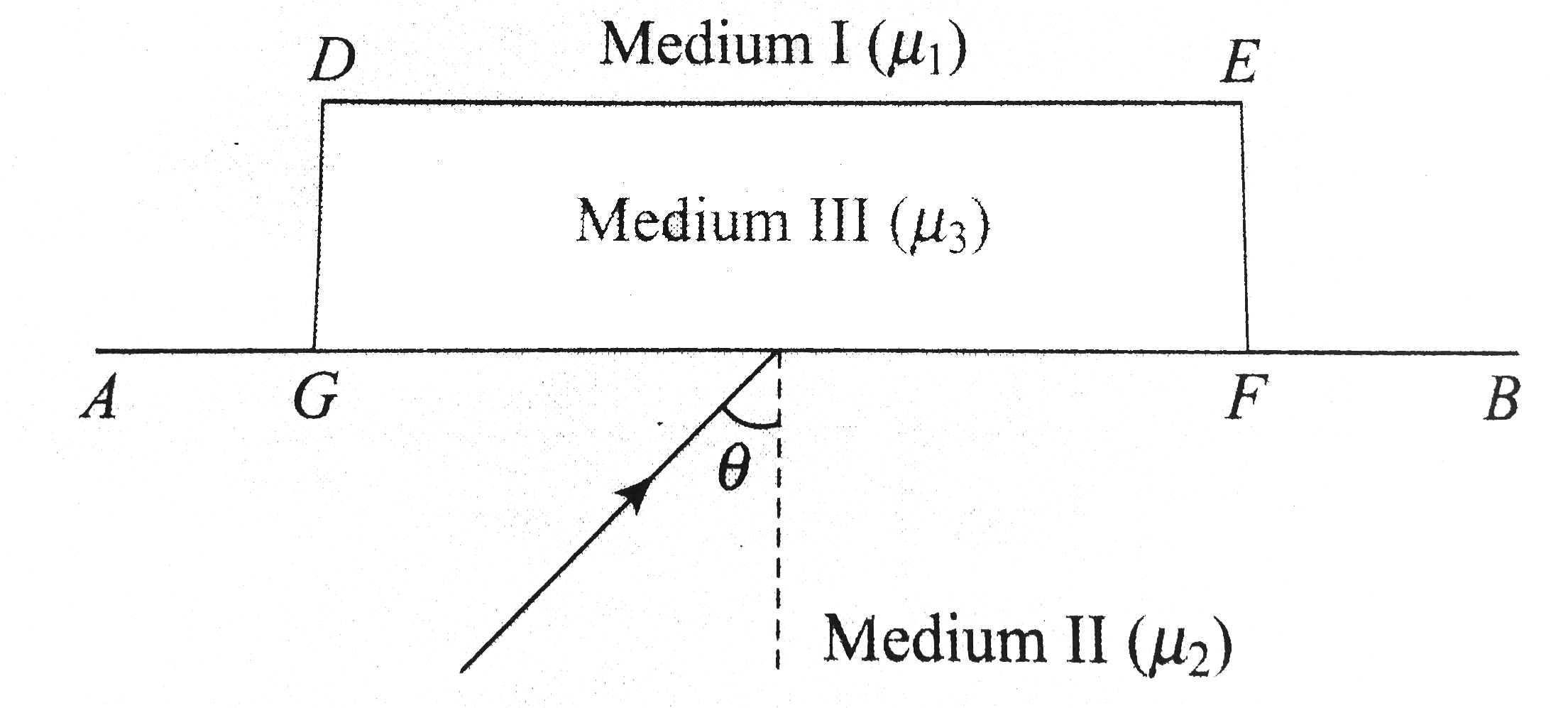 View Solution
View Solution(a) A point object is placed on the principal axis of a convex spherical surface of radius of curvature R, which separates the two media of refractive indices nx and n2(n2>n1)
Draw the ray diagram and deduce the relation between the object distance (w), image distance (v) and the radius of curvature (R) for refraction to take place at the convex spherical surface from rarer to denser medium.
(b) A converging lens has a focal length of 20 cm in air. It is made of a material of refractive index 1.6. If it is immersed in a liquid of refractive index 1.3, find its new focal length.View SolutionTwo refracting media are separated by a spherical interface as shown in the figure.
 View Solution
View Solution

